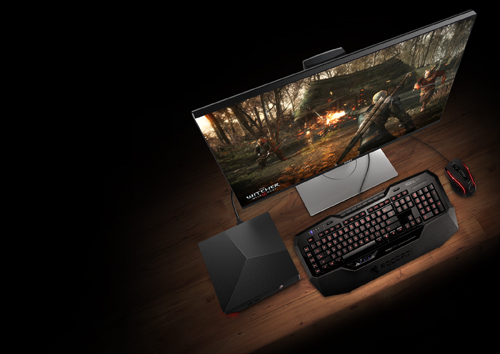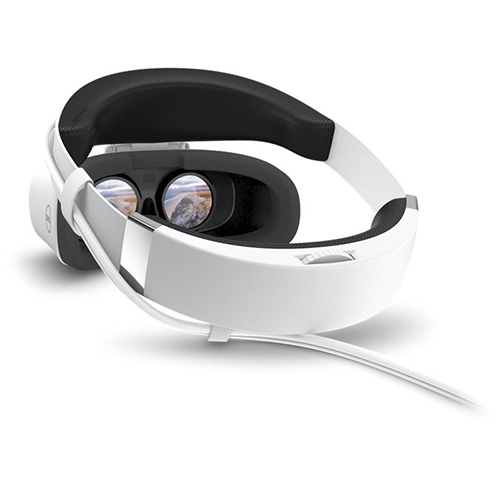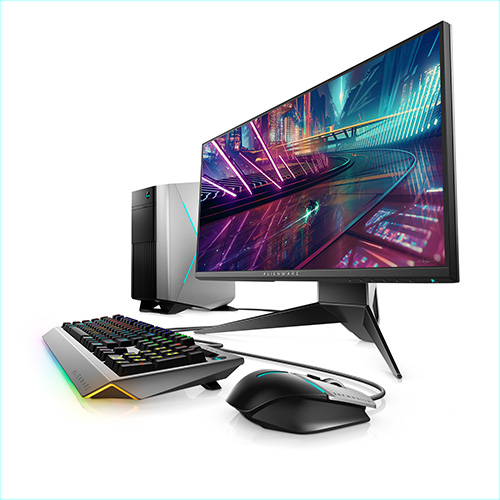
At PAX Australia 2016 I got the chance to speak with Alienware’s Joe Olmstead about their current range of products, VR and what they’re thinking of doing in the future.
Andrew: First of all, thank you for taking the time to speak to me, Joe. As we’ve seen, you think that VR is a big watershed moment for gaming. Obviously a lot of companies are coming out and announcing their own VR headsets. Is that something Alienware is going to look at in the future?
Joe: I think that the most important thing for VR is content. Making a pair of goggles, to be very simplistic, is something anyone can do. It’s glass and circuit boards. To be successful, you have to have content behind it. Right now the top two VR headsets have their own VR content behind them. Us, making an Alienware VR device, would mean I’d have to choose one of those content sources and right now we’re not ready to do that. So, I love HTC and the Oculus, I think they’re both great. I haven’t tried the Playstation VR, so I can’t speak to the quality of that. Right now, in my world, you have to be part of a content store and I don’t think that’s going to change soon.
Andrew: I agree, at the moment a lot of VR seems to be tech demoes and experiences, but not fully fledged games, as such. Current VR is very much a closed ecosystem, and not many companies have pointed that there’s no benefit to bringing in another closed garden.
Joe: You brought something up which is good. You know, when the iPhone first came out, it was the first phone that had an accelerometer that knew where you were in a 3D space. So, many of the games that came out for that phone were about exploiting that new technology rather than building a great character based story. So, I think we have a lot of VR content like that now. The indie market from what we’ve seen is just going to explode. I think that when it comes time for me to do a headset it would be the same as me doing an LCD display, it’s just a great piece of tech with my brand on it, but I think we need a few years.
Andrew: Moving on to something else, you’ve announced the new Alienware 13 which is going to be a VR compatible 13 inch laptop, what can you tell me about that?
Joe: Well, we just started selling it in the US. It’s in very few countries now, although it will come to Australia on January 5th. It’s an intel-based quad core product, with either an i5 or i7, it has a GTX1060 GPU and there will be other GPUs in it that aren’t commercially available yet. It’s just over 5 pounds, and I’m not apologetic about this but I’ll never have the lightest notebook or the thinnest notebook. Gamers want a product that’s substantial and they want it to be reliable and they want it to be everything, but no one brags about how thin their notebook is. We have an OLED screen available on it as well, it is amazing how beautiful that screen is. I think OLED is going to be just as important to the LCD industry as the LCD was to the CRT industry. That will be coming soon, I can’t even begin to tell you what the price is going to be, because I just don’t know how to convert it. Probably twice as much as everything I’ve seen by the time something gets down here. The currency, the shipping and the taxes all have a big effect.

Andrew: With size, you’ve obviously been going smaller and smaller with desktop PCs at the moment. You’ve gone from the original big Alienware desktops down to the X51 and the Alpha, how small do you think is too small?
Joe: Well, to us the definition of a desktop has to do with the battery: Does it have one? The Alpha doesn’t have a battery, but yet it’s smaller in weight and size than some of my notebooks. I don’t see us making an Alpha smaller. The number one thing we wanted in the Alpha was 1080p gaming at 60fps. We’ve just updated it to add a GTX960, which is an incredible amount of performance in a 2L case. So to me, I don’t see us getting smaller. We don’t ever use size when we’re designing a product, to the point that we don’t want to make it big for the sake of making it big. Nobody wants a 22 pound laptop, but we decide what performance we want to offer and then we try and make it as efficiently small as we can.
Andrew: In the last two years you’ve been bringing through a lot more different sized and shaped products to the market. How do you come up with your ideas and what to bring?
Joe: We’ve been a completely dedicated and focused gaming company for 20 years. We weren’t a mainstream computer company that decided to get into gaming. We weren’t a keyboard company that wanted to get into gaming. We focused almost exclusively on bringing gaming PCS to market. Now, as a result of that, there are those who copy us, although copy may not be the right word. We influence the designs of more than just us, so when we sit and think of our triangle tower, the Area 51, we wanted to get out of the world of paint. Because before that everything was a rectangle and you painted it. So we were like, ‘You know what? Let’s do something crazy!’ and since then we wanted to be leading edge, but it has to be purposeful as well. The Area 51 in that form factor is more thermally efficient than a rectangle, because the heat that collects at the top gets expelled and doesn’t collect. So, when we do these things we are authentic in the design in that it’s not a gimmick. We’re already working on our next major form factor and design, and now we have to beat the Area 51 and make it iconic, yet functional, and deliberate and, frankly, useable.
Andrew: They are very distinctive products and I have no doubt there would be a large market there of people who would love to buy them as cases on their own. Have you ever looked at that before?
Joe: Well, we have and we haven’t. The reason why we’re not, has more to do with the fact that our cases are designed to work in a high volume manufacturing organisation. It’s not meant for a DIYer. We make it so that it works in 38 countries, so we don’t have an efficient DIY kit. We have an incredibly expandable case that we can ship to anywhere. It’s not something that I frankly think people would want at the price we would have to charge. You know, it wouldn’t be a $70 case in a store. But, to that point, all of our cases use industry standard mounting, so if you bought our Area 51 today, in two years you could rip out that motherboard and put in an industry standard motherboard and carry on the life of that case. The power supply is an industry standard power supply, so it can all go to whatever your next PC will be.
Andrew: Thank you for your time today, Joe, I hope you have a wonderful rest of your PAX.







